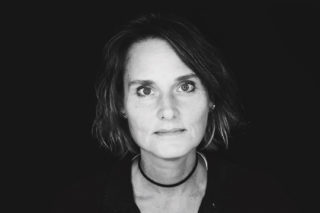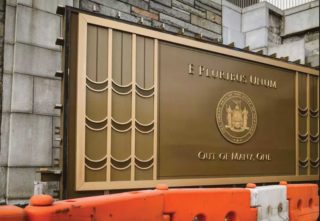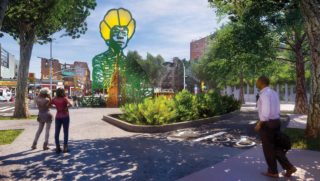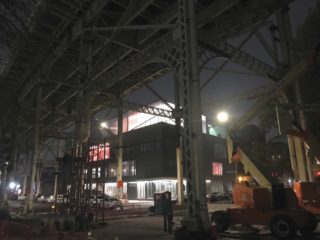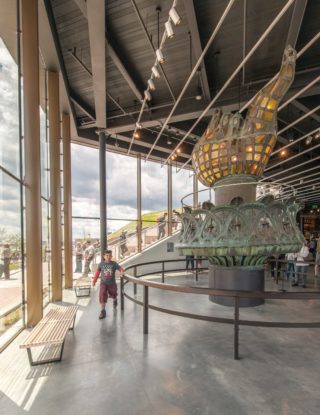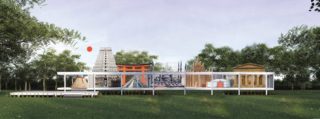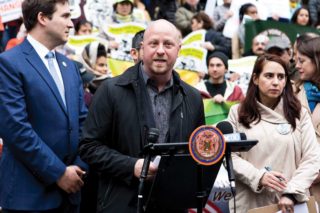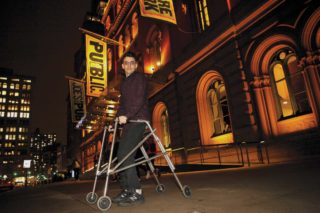Fully the Bronx and fully Bengali, Basma Sheea has a sound of her own: R&B merged with Bengali music and rap. She was set to perform at the Andrew Freedman Home for the “It’s the Bronx” music festival last spring, but when the promoters’ ties to real estate developers came to light, social media caught fire, with other Bronx collectives, like Hydro Punk, agitating for an embargo on Instagram. The pressure shut down the event. “I understand why this was such a big deal for them to go against it and to protect their community, but most of us artists weren’t really aware of where the funding was coming from,” Sheea said from the steps of the Freedman home, itself a dichotomy of blessings and curses, not unlike the concourse.

The Andrew Freedman Home was built in 1922 for rich industrialists who had come on hard times in their old age. The limestone Palazzo Farnese-esque edifice cost $1 million to build, which is more than $27 million in today’s dollars. Today, the Freedman home has slowly crept back from decay and anomaly to house artist studios, Fifth Avenue-worthy exhibitions, and events. The owners have become de facto leaders in the Bronx arts community, eventually holding a town hall for the opposing parties of the shuttered festival. Like the concourse, the once-grand facility has seen better days, but the organization has stepped up to its new role as the borough bounces back—though amidst persistent poverty. For many activists, the Bronx represents the last stand against gentrification.
“This whole drama brought together a group of artists,” said Sheea, “even though you didn’t get to perform.” Sheaa joined Yo-Yo master/rapper Richard Pigkaso and other Bronx artists to meet at an open mic night at an Irish pub in Pelham Bay, NY, to compete for a spot on NPR’s Tiny Desk Contest. For Sheea and her newfound artist friends, including Hydro Punk, simply finding an open mic and audience was a triumph. Lest one forgets, this is the borough where hip-hop was born and where boogaloo, salsa, and bebop grew up—in spite of urban decay. Gentrification presents an unexpected challenge. “It’s music that ties everybody I know” said Sheea. “You have this story to tell, I have a story to tell. For me, it’s never really been about class. Honestly, I’ve never really thought about that divide until now.”
Keep reading:
1. East Village, Manhattan: Ryan Haddad, Playwright and Performer at the Public Theater
2. SoHo, Manhattan: Charles Leslie, Founder of the Leslie-Lohman Museum of Gay and Lesbian Art, at the Museum
3. Arthur Avenue, the Bronx: Michael Rella and Peter Servedio, Butchers at Peter’s Meat Market, the Arthur Avenue Retail Market
4. Garment District, Manhattan: Nicola Caito and Camille Tetard, Patternmakers, at their Atelier
> Grand Concourse, the Bronx: Basma Sheea, Bengali-American Singer, at the Andrew Freeman Home
4. Garment District, Manhattan: Nicola Caito and Camille Tetard, Patternmakers, at their Atelier
6. Grand Concourse, the Bronx: Elissa Carmona, Lead Singer and Founder of the Marrisania Band Project, at the Bronx Museum of the Arts
7. Washington Heights, Manhattan: John Paul Enfante, Writer and Teacher, at the Hispanic Society
8. Midtown, Manhattan: Ness McKelvey at Home
9. St. George, Staten Island: Bain Coffman and Gui Junta, Restaurant Owners at Chang Noi Thai
10. Astoria, Queens: Admir Ekmestic, Former Soccer Player, at Mrki’s Place ONLINE EXCLUSIVE
11. Astoria, Queens: Dee Flattery, Pub Owner at The Quay ONLINE EXCLUSIVE
12. Tomkinsville, Staten Island: Veronica Arze, Café Owner at Duzer’s Local ONLINE EXCLUSIVE








